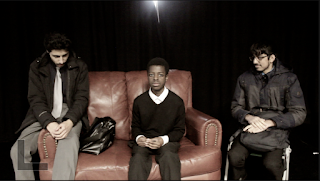Exposure control would be another way to determine how the camera should appear. In terms of achieving how this should be, when using the camera, we went to the settings, went on exposure, and put it to 0, in which it would appear bright. During editing, we put a color filter on the video changed the lighting to combat lighting, which was to present how times have changed and how we are in an era where all of a sudden, fully packed places are seen to be empty. With this editing choice, we still kept the brightness from the real footage to convey that it is daytime, which would imply where the shock from the audience would come from.
One of the settings that were used in the short film is camera lenses, which were standard. In order to achieve this, we made sure that the exposure of the camera was clear enough to capture the image of the main item or person in the film. In terms of editing this, we changed the colour of the video by adding a colour filter to give it a distorted look. This editing choice enhanced the camera setting as the colour change would make it look as if the video was taken at a different time.
Shutter speed would be another camera setting. This determines when the camera sensor will be open or closed to incoming light from the camera lens. The shutter speed specifically refers to how long this light is permitted to enter the camera. For the footage that we filmed, there were some shots where it was 1/50 - 1/100 seconds. This was mainly the shot of the teacher’s chair, where it was hand-held. As with the change that we implemented for the exposure control, we also added the same colour filter to convey a form of distortion. This would enhance the camera setting as it would present how times are changing and how it's unpredictable how things will be in the future.
Natural lighting was one of our main lighting techniques in the short film. In a way for us to achieve using this lighting, we used the lighting that was already present at the location. When it came to editing, for the montage scene, we changed the colour of the video, placing a combat colour effect over it. We kept the brightness of the video as we wanted to present what time of day it is. With this editing choice, it would give a mysterious effect, based on how there is no date label put at the beginning.
Ambient lighting was another lighting that was used in the short film. This was another lighting technique that was achieved easily as we used the light that was already there. When it came to editing the final version, we kept the lighting the same as we wanted the audience to be able to sympathize with the character. In terms of the speed, we sped up some of the shots slightly, mainly when the character was picking up the notepad. This was when filming, as I was acting out the character, I did take a bit of time doing some certain actions and as the brief required the film to be between three and five minutes, we wanted to make sure that we had enough time to include all the significant shots in it.
Key lighting is another lighting that was used in the short film. This was a lighting technique that was used in the film, mainly in the last scene. In order to achieve this lighting, we turned off the lights on the backside of the room and kept the lights on the front side of the room. When it came to editing the final version, we changed the colour of the visual to a combat colour effect, in which we could display how the character's mind has gone out of control. With this choice, I felt that this enhanced the lighting as it would convey the character's state, especially as he was alone for a long time.









No comments:
Post a Comment